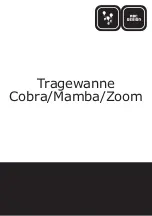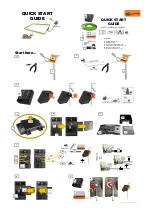
operations with the specific drive finish before removing the device. Refer to the
LabVIEW Help for more information.
The file system of the cRIO-9063 follows conventions established for UNIX-style
operating systems. Other LabVIEW Real-Time targets follow Microsoft Windows-style
conventions. In order to facilitate the porting of applications from those targets, this
target supports the Windows-style /C home directory. This path is bound to the
UNIX-style directory /home/lvuser.
Various LabVIEW Real-Time system files which would be accessible from C: (or /C) on
other LabVIEW Real-Time targets are found in different locations on this target.
UNIX-style file systems support the concept of a symbolic link, which allows access
to a file using an alternative file path. For example, it is possible to link /C/ni-rt/
system, where dynamic libraries are deployed on other LabVIEW Real-Time targets,
to /usr/local/lib, where they are stored on the cRIO-9063, if the application requires
this.
For more information, visit
and enter the Info Code RT_Paths.
Mounting the Device
To obtain the maximum allowable ambient temperature of 55 °C, you must mount
the cRIO-9063 horizontally on a flat, metallic, vertical surface such as a panel or wall.
You can mount the cRIO-9063 directly to the surface or use the NI Panel Mounting
Kit. The following figure shows the cRIO-9063 mounted horizontally.
Figure 6.
cRIO-9063 Horizontal Mounting
1
1. Up
You can also mount the cRIO-9063 in other orientations, on a nonmetallic surface,
on a 35-mm DIN rail, on a desktop, or in a rack. Mounting the cRIO-9063 in these or
other configurations can reduce the maximum allowable ambient temperature and
can affect the typical accuracy of modules in the cRIO-9063. For more information
about typical accuracy specifications for C Series modules and temperature
© National Instruments
17
cRIO-9063 Features












































